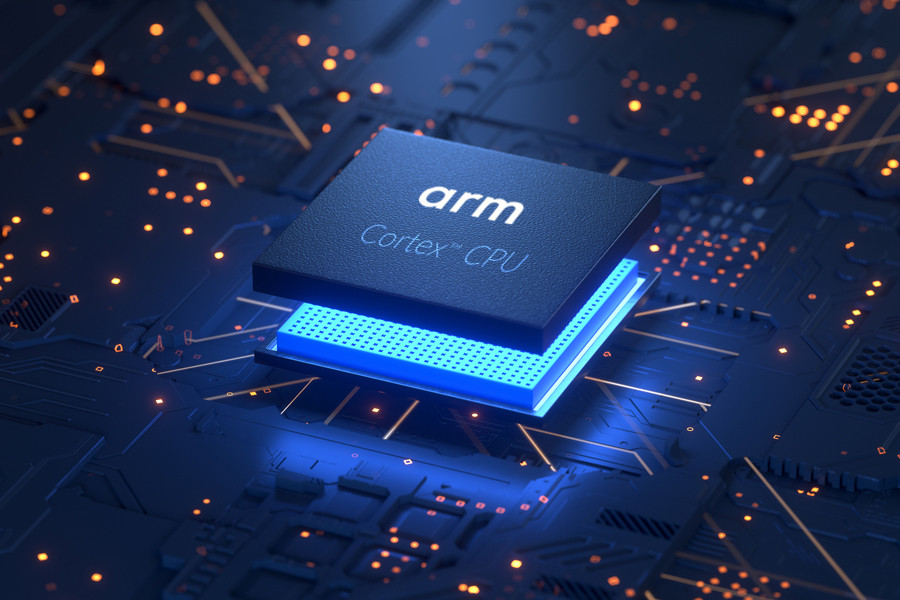 APPS
APPS
 APPS
APPS
 APPS
APPS
Arm Holdings plc today debuted a new top-end core design, the Cortex-X925, that can be used to build central processing units for handsets and personal computers.
The design is rolling out alongside a graphics processing unit blueprint called the Immortalis-G925. According to Arm, it speeds up rendering by reducing the need to perform a type of computing operation known as sorting. Both the Cortex-X925 and Immortalis-G925 can be manufactured using a three-nanometer process.
Arm refreshes its top-end CPU core design once a year. According to the company, the newly detailed Cortex-X925 core introduces the largest speed increase in the Cortex product line’s history. It can run single-threaded applications 36% faster than Arm’s previous-generation core, while artificial intelligence performance is 25% higher.
Alongside data-crunching circuits, CPUs include an onboard cache they use to store the information they process. The cache is typically organized into three parts known as the L1, L2 and L3 sections. The L1 section is the fastest and smallest, while the L3 component is the slowest and largest of the three. The L2 cache is the intermediate section.
Arm says CPUs based on the Cortex-X925 can be equipped with up to 3 megabytes of L2 cache per core. A CPU can retrieve data from its cache faster than from the RAM of the device in which it’s installed, which speeds up processing. As a result, increasing the size of a processor’s L2 memory pool allows handset makers to boost performance.
The Cortex-X925 is rolling out alongside two lower-end core designs that trade off some processing speed for reduced power usage. The first, the midrange Cortex-A725, is up to 25% more power-efficient than its predecessor. It’s joined by the entry-level Cortex-A520, which offers a 15% efficiency improvement. Both chips can be manufactured on three-nanometer nodes.
For hardware makers, using Arm’s prepackaged core blueprints is faster than developing a CPU from scratch. But there’s still a significant amount of work involved in designing a custom processor. To speed up the task, Arm provides processor templates called CPU clusters that are based on its Cortex core designs.
The company today debuted a new CPU cluster that it says can be used to develop processors with up to 14 cores. It promises to provide faster app performance than earlier designs.
“At a high level, the new CPU cluster offers 46% better AI performance compared to CPU clusters that utilize the previous generation Cortex-X4, leading to more responsive performance and sustained throughput,” detailed Saurabh Pradhan, director of product management for Arm’s client CPU business. “It offers 30% improvements in key user experience indicators – that combine performance and power – compared to the TCS23 CPU cluster.”
According to Arm, CPUs based on the blueprint will also be more power-efficient. One contributor to the increased efficiency is an optimization that reduces the amount of electricity consumed by cache misses. Those are situations where a CPU attempts to retrieve a piece of data from its onboard cache, but fails to find the information and retrieves it from RAM instead.
Arm’s new flagship smartphone GPU, the Immortalis-G925, debuted this morning alongside the new CPU cores. The graphics card can run some mobile games 37% times faster than its predecessor. Arm is also promising a 34% performance improvement for apps that use AI models to process data.
Like Arm’s latest CPU core designs, the Immortalis-G925 can be manufactured using a three-nanometer process. Another contributor to its performance is a feature that Arm dubs fragment prepass. According to the company, the feature reduces the need for sorting, a type of computation that rearranges the pieces of data used by an app to make them easier to process.
“Through fragment prepass, we have observed up to 43 percent reduction in render thread cycles due to the removal of object sorting,” Anand Patel, the senior director of GPU product management for Arm’s client GPUs, detailed in a blog post. “This leads to improved performance and power efficiency, as well as a reduction in the CPU load.”
The Immortalis-G925 will become available alongside two other GPU designs. The first, the Mali-G725, makes it possible to build GPUs with up to 9 cores for high-end smartphones. For entry-level handsets and smartwatches, Arm is offering the new Mali-G625 blueprint, which can be equipped with up to five cores.
THANK YOU